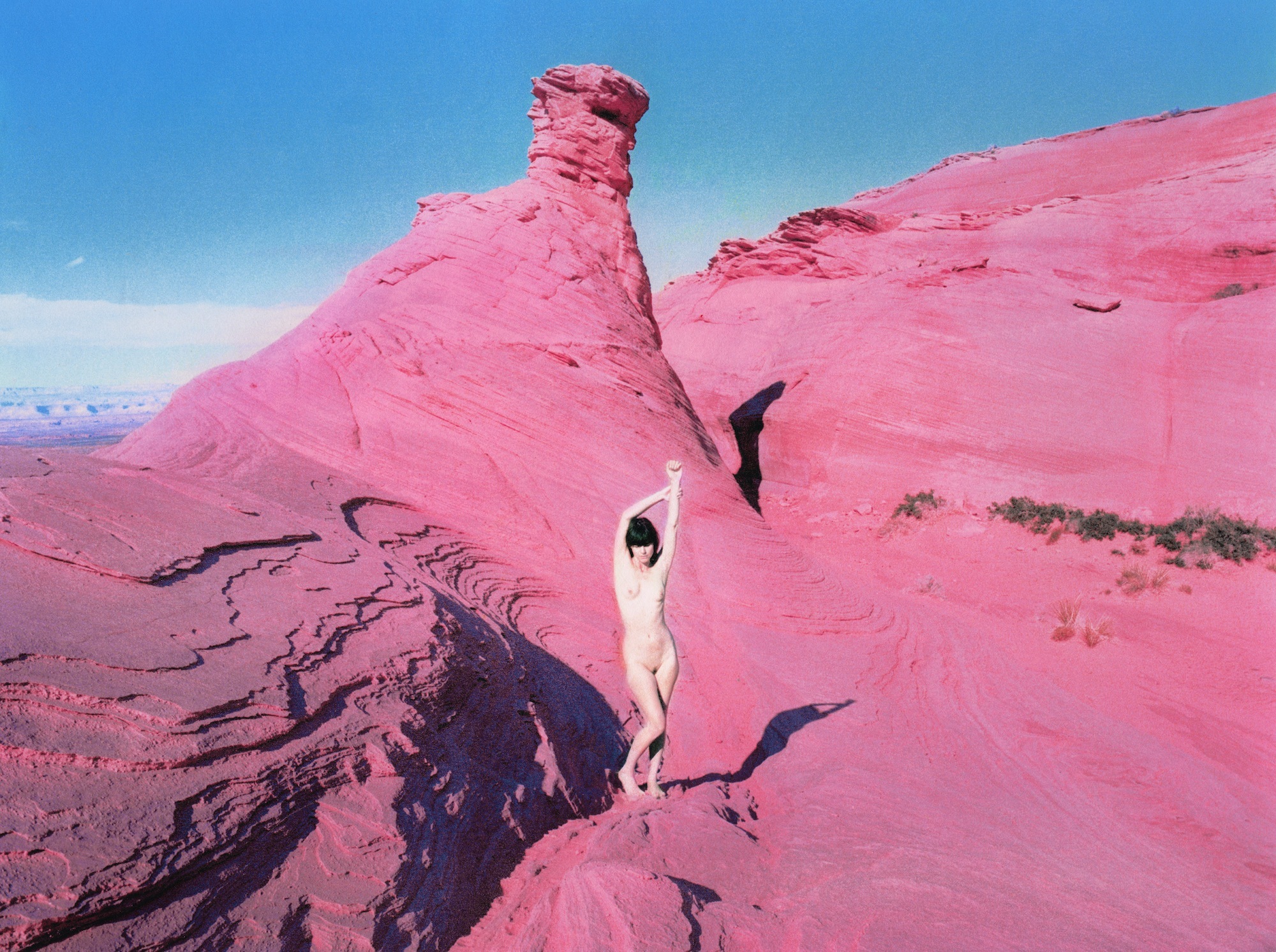Shae Detar started her career as a bit of a creative Goldilocks. She knew acting wasn’t for her when she struggled to master the Shakespearean language. After a brief stint as a model, she decided to pursue art school at the School of Visual Arts. But computer-heavy graphic design wasn’t the right fit either, as Shae longed to make things with her hands. Her love of collage, color, and tactile forms of expression led her to a world of whimsy and dream-like art, adopting an antiquated hand-painted technique to create photography focused on animals, nature, and the female form. Shae chats to i-D about women’s bodies, hustling in New York City, and trying not to fuck up her first commissioned job.
When did the blurring of photography and painting occur to you?
When I was a teenager, I started taking magazines and cutting them up into collages and then I’d paint things on them. I never thought of it as art and I definitely had no intention of being an artist because I was convinced I would be an actor my whole life.
Where does your affinity for the female form come from?
I grew up looking through mostly Japanese and British fashion magazines and admiring all the makeup and styling. Combine that with my theatre and acting background, and if you put all of that into a blender, you get some form of art that is colorful, stylized and cinematic or theatrical. I take pictures of images that pop into my head, and for whatever reason, the subjects have always been women. Shooting nudes, I did make a very conscious decision to portray the female nude in a way where women didn’t feel like a sexualized object. I am so used to the media feeding us objectified, sexualized imagery of what it is that they think a female body means to people, and I’m clearly not alone in desiring to portray women’s bodies in a more powerful way than that.
Tell us about the billboard you did for Aritzia.
Aritiza found me on Instagram a few years ago. Actually, that Aritzia billboard was only the second professional job I ever did on this art journey. The first was an online editorial for Aritzia and about six months later they hired me for the billboard campaign. The guy who hired me was hilarious; he must have been getting pressure from the owner of the company, and became nervous about hiring someone as new as I was at the time. He kept repeating to me at random times, “If you fuck this up I could lose my job.” I basically approached that campaign with the “fake it ’til you make it” mindset and tried not to let his stress affect my creativity. I came up with two ideas for them, they picked one and I set off to make it happen. It was all really quick, exciting and surreal and they loved what I handed in. I proved to myself that I could take on a project of that size and succeed at it; nothing seemed too daunting after that.
When was your first exhibit and which have been pivotal for you?
Gallerist and curator Andi Potamkin gave me my first experience in a gallery. Andi is this amazingly genuine, passionate and inspiring woman (and a total babe) who really believed in me early on. She and NYC gallery owner Steven Kasher put together an art show comprised of five female photographers in Chelsea, and I was one of those five females in the show. The show was pivotal for me in many ways and the amount of press we got from it was really helpful to my career. It opened up a lot of doors.
Is it still a struggle and hustle working as a female artist in New York City or are you at a comfortable point in your career?
It’s definitely a hustle and a struggle at times, but I try to remember that anything worth doing is a struggle at some point, right? And it’s usually through the times we struggle that we really grow and gain strength. I think having to hustle is just part of the equation to anything you really want to achieve in this life. I give art everything I’ve got; I’ll never stop hustling.
How important have platforms such as Instagram been to you and your work?
Instagram was paramount to my career. It got my work out into the world and people began to share my painted images on their blogs and Instagram feeds. I’ve had galleries and curators find my work and put me in their shows and brands have found me and hired me for jobs. If you are an artist, it’s an incredibly helpful platform.
Credits
Text Sarah Owen
Images Shae Detar
